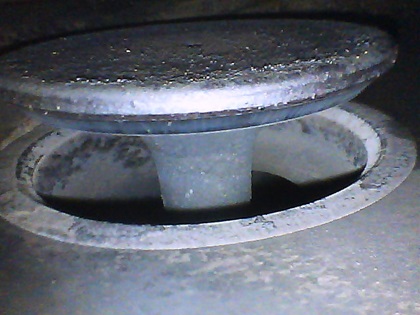Aircraft Maintenance: Don't pull that cylinder (at least not yet)
Ask the average aircraft owner how their annual inspection went and they’ll probably tell you the cylinder compression test results.
When it comes to annual inspections, or even listing an aircraft for sale, most aircraft owners seem to focus on the ubiquitous compression check as the most important measure of the health of the engine. That’s too bad, because there’s lot more to the health of your engine than just the cylinder compressions, and those compression numbers themselves can sometimes cause more harm than good.
Step 1: Is it really low?
To get accurate compression test results, the test needs to be conducted properly. This means that the engine needs to be warmed up to operating temperature, the compression tester needs to have been calibrated, and the procedure in the maintenance manual needs to be followed exactly. For example, the compression test should start by using a calibrated orifice to measure the baseline numbers for the gauge before proceeding to the engine. Without this step, the mechanic does not know the accuracy of the gauge and how to correct the numbers shown.
Step 2: Where is the leakage coming from?
It’s fairly easy to tell where the air is leaking from the cylinder. If it is leaking past the rings, you will hear the sound of escaping air at the oil fill tube. If it’s leaking past the intake valve, you will hear it at the intake air filter. If it’s leaking past the exhaust valve, you’ll hear it at the exhaust pipe. Ring leakage rarely indicates a safety of flight issue, while exhaust valve leakage could lead to discovering a valve that is about to fail. Knowing the source helps focus our efforts during the next steps.

Step 3: Borescope the cylinder and make a plan
Borescopes are the single greatest advance in aircraft maintenance since the engine monitor. For relatively little money, modern electronic borescopes allow us to literally see inside the cylinder to evaluate the cylinder walls, valves/seats/guides, and the piston face. Experienced mechanics can learn a lot from simply evaluating borescope images of a cylinder. This knowledge leads to making logical and cost-effective strategies for how to address the issues found. If your A&P doesn't own a borescope, I recommend purchasing your own such as this one.
Step 4: Employ the least invasive procedure you can
There are some surprisingly effective procedures available to the mechanic before resorting to pulling the cylinder. Unfortunately, not all mechanics are aware of them.
Ring leakage
If the major cause of low compression is leakage past the rings, most engine manufacturers recommend simply flying the aircraft for 45 minutes and re-testing. The shifting of ring positions due to operating the engine may resolve the issue. If compressions do not improve, consider a process known as “ring washing” as a next step. Ring washing is designed to clear gummed up oil that can contribute to stuck rings (and also help indicate if one of the rings is broken). Click here to view the procedure.
Valve leakage
This is where the borescope is so incredibly important in identifying critical versus correctable conditions. By evaluating the color pattern and condition of the valve and seat, the mechanic can evaluate the condition of the seating surface of the valve. If the mechanic determines that the valve is salvageable, it can be “lapped in place” to restore the seating surfaces of both the valve and valve seat. This process is fairly noninvasive and has a great track record of restoring compression and protecting the valve from further damage. Be sure to replace the springs and rotators (on Continental engines) following the procedure. I will cover valve lapping in more detail in my next article.
For Lycoming engines, it's also very important to perform a valve wobble check to examine and record the condition of the valve guides. Lycoming has issued Service Bulletin No. 388C about this procedure that requires a special tool that your mechanic should have.
Step 5: If you must replace a cylinder, do it by the book
If, ultimately, you find that you need to repair or replace a cylinder, it’s important to follow the manufacturer’s maintenance manual exactly. Replacing a cylinder is a very invasive procedure with many opportunities for maintenance-induced failures (including spun bearings, improper cylinder base nut torque, improper break-in, and other problems).
Many shops and owners consider using the repair of one cylinder as an opportunity to replace additional cylinders that may not be showing the same signs of trouble. They may even recommend a complete “top overhaul.” On the surface, this may seem to provide “peace of mind” and a clean slate with new cylinders all around. However, it’s important to consider that each cylinder is completely independent. Having a problem in one cylinder does not necessarily mean that the others are going to experience the same issues down the road. If you pull a perfectly good cylinder out of service just because its neighbor has a problem, you might wind up creating a new problem. Proactive cylinder replacement does not always result in the “peace of mind” you pay for.



